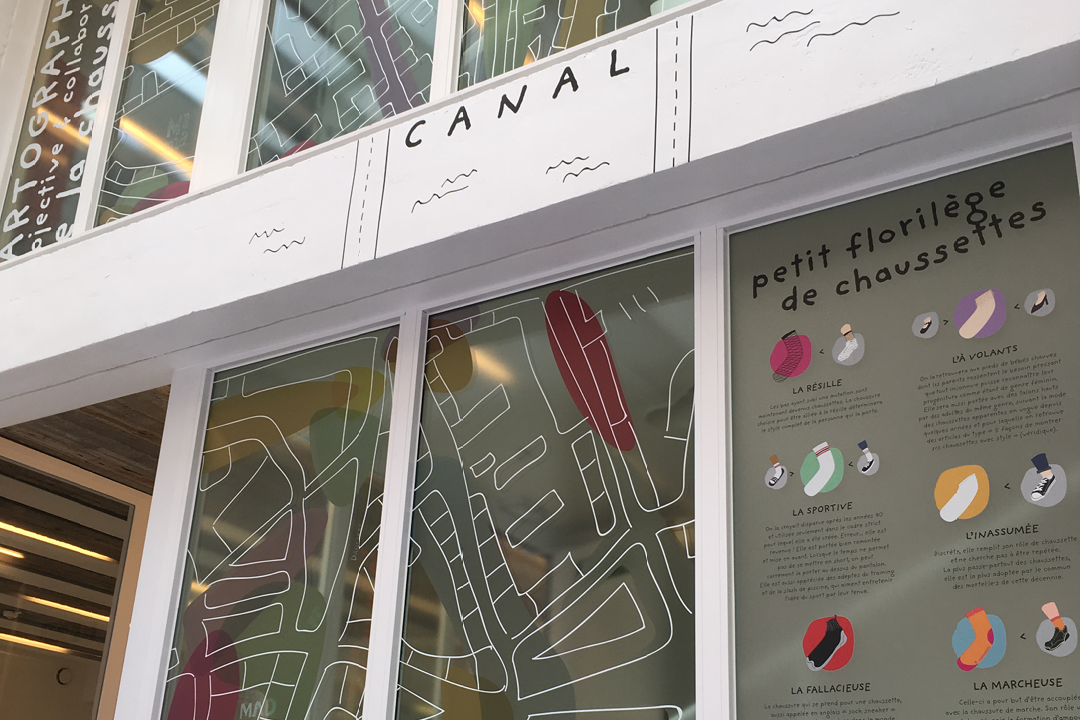Sensitive mapping
Are you involved in the political world? Are you a project lead in a municipality? Urban designer? Neighbourhood Committee head? Do you want to gauge the feelings of your residents? Sensitive mapping could well be of interest to you. This visual space transformation tool brings together, through a co-creation workshop, all the key stakeholders. A sensitive map makes it possible to communicate subjective information.

Sensitive mapping realised for an exhibition at MAD Brussels
What is sensitive mapping?
Sensitive mapping is a fairly recent graphic design technique. What is its objective? Make the area a visible experience. The aim of sensitive mapping is to convey and represent the experience or story of a place by comparing perspectives, notably between professionals and residents, to guide transformations of the area and conduct a process of co-creation of the area.
When a print graphic designer creates sensitive mapping, they will reflect with a number of people on the vision of the area. They then redesign the area in the form of a map.
But this is not about creating a traditional geographic map. Sensitive mapping can omit certain elements, such as the notion of scale, and make room for subjectivity. Sensitive mapping is more focused on stories, emotions, memories, noises, smells and colours. It is free from all the usual codes of traditional mapping so that it can concentrate solely on conveying subjective information.
For whom?
Are you looking for a concrete approach to evaluating perceptions of an area by its residents? You can count on sensitive mapping! It will help you plan development strategies while leaving room for subjectivity, rarely considered in decision making. The mental pictures of the town are also taken into account.
Sensitive mapping is also suitable for:
- Policies
- Urban designers
- Neighbourhood committees
- Municipalities
- Classes
By whom?
For sensitive mapping projects, I work with a geographer specialising in data collection. This collaboration makes it possible to run workshops jointly and analyse the results together.
Ingredients for sensitive mapping
Sensitive mapping combines:
- Creativity
- Empathy
- Qualitative and quantitative data collection
- Citizen contribution
- Dialogue
- Co-creation
- Cartography & graphic design
The advantages of sensitive mapping
- Comprehension
- Mapping of intangible data
- Representation of the space
- Starting point for discussions
How does it work in practice?
DEFINITION OF THE SUBJECT
At the client briefing, we clearly define the subject matter for the project as well as a series of indicators which will be useful for the project.
DATA COLLECTION
The required data is then collected. Information may be collected in various ways: observation, interviews, participatory workshops, archive research, statement gathering, surveys, field studies.
CO-CREATION WORKSHOP
The graphic designer and geographer will organise one or several co-creation workshops with the citizens involved. Workshop objective: get participant perceptions. The graphic designer then translates these perceptions visually in the form of a map.
DEFINITION OF FORMAT
Various graphic representation formats are then explored. Which format will be the most suitable? The most expressive? The most understandable?
CREATION OF SENSITIVE MAPPING
Finally, the print graphic designer designs the illustrated map and presents the finished product to the client.
Are you interested in sensitive mapping and would you like to know more? Let's discuss your project!
Please contact us!
Fill out the quote request form and we can discuss your project.



